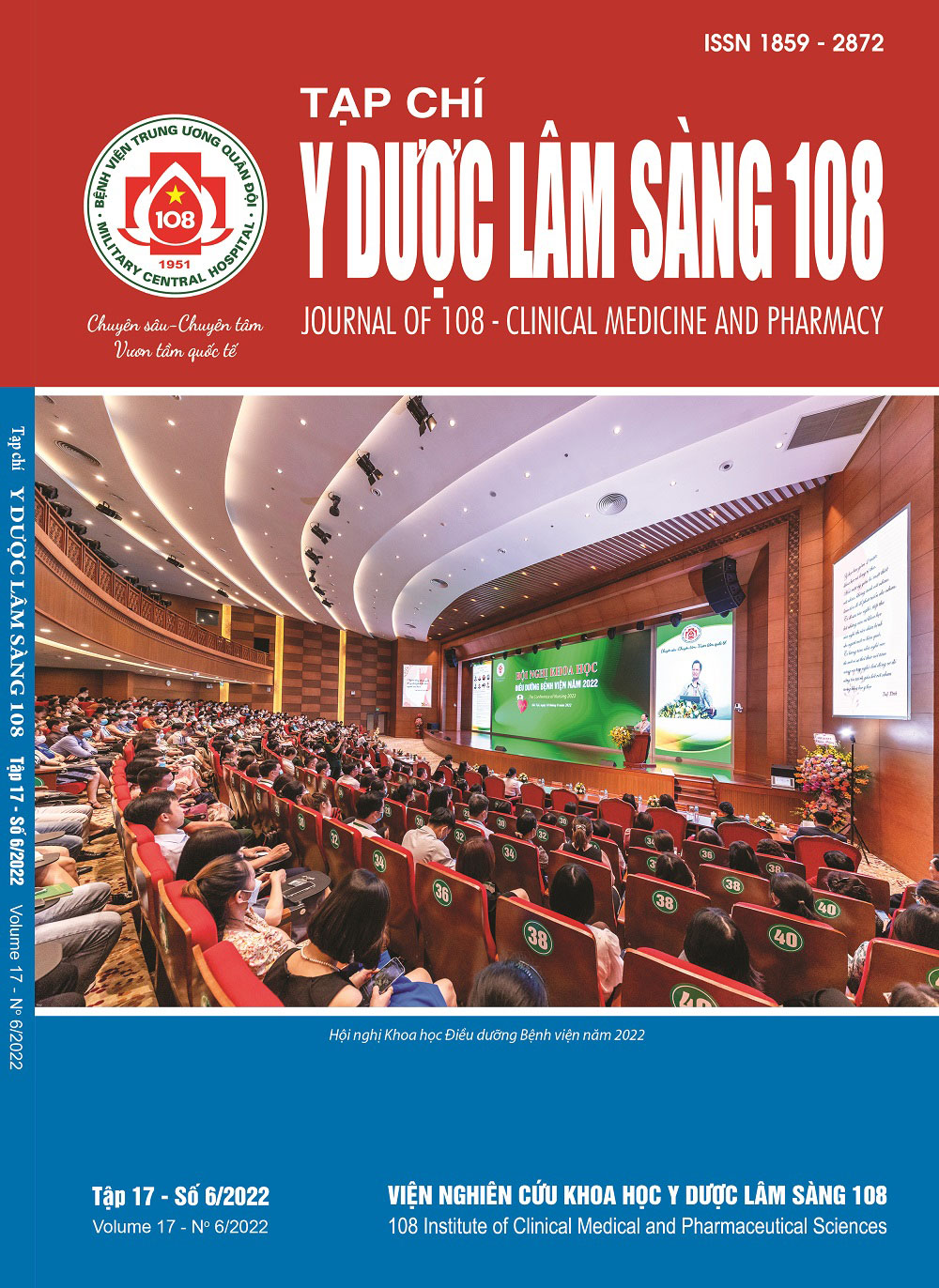Results of laparoscopic cholecystectomy using indocyanine green fluorescence (ICG)
Main Article Content
Keywords
Abstract
Objective: To evaluate the results of laparoscopic cholecystectomy using Indocyanine Green fluorescence (ICG). Subject and method: Prospective study was conducted on of patients with laparoscopic cholecystectomy using fluorescent ICG to treat gallbladder disease from May 2021 to May 2022 in 108 Military Central Hospital. Result: 68 patients were treated with laparoscopic cholecystectomy using fluorescein ICG, the age mean of the patients were 55.4 ± 16.2 years, and the male/female ratio was 1.52. Chronic cholecystitis caused by stones accounted for the majority (51.47%); using ICG fluorescence detected 7.35% of cases with anatomical changes of the extrahepatic biliary tract, clearly identifying the anatomy of the common bile duct and the cystic duct was 100% and 92.65%, the average of surgical time was 42.8 ± 14.6 minutes. There were no cases of complications and side-effects of ICG, the average of hospital stay was 2.8 ± 1.5 days. Conclusion: ICG fluorescence imaging allows surgeons to clearly identify critical anatomical landmarks in laparoscopic cholecystectomy. Thereby helping the surgery to be performed safely, avoiding severe complications due to damage to the biliary tract.
Article Details
References
2. Flum DR, Dellinger EP, Cheadle A et al (2003) Intraoperative cholangiography and risk of common bile duct injury during cholecystectomy. JAMA 289: 1639-1644.
3. Ishizawa T, Bandai Y, Ijichi M et al (2010) Fluorescent cholangiography illuminating the biliary tree during laparoscopic cholecystectomy. Br J Surg 97: 1369-1377.
4. Kusano M, Kokudo N, Toi M, Kaibori M (2016) Chapter 36: ICG fluorescence cholangiography during laparoscopic cholecystectomy. ICG Fluorescence Imaging and Navigation Surgery, Springer: 389-396.
5. Shibata H, Aoki T, Koizumi T et al (2021) The efficacy of intraoperative fluorescent imaging using indocyanine green for cholangiography during cholecystectomy and hepatectomy. Clinical and Experimental Gastroenterology 14: 145-154.
6. Kusano M, Kokudo N, Toi M, Kaibori M (2016) Part I: basis of ICG fluorescence method. ICG Fluorescence Imaging and Navigation Surgery, Springer: 3-30.
7. Ishizawa T, Tamura S, Masuda K et al (2009) Intraoperative fluorescent cholangiography using indocyanine green: A biliary road map for safe surgery. J Am Coll Surg 208(1): 1-4.
8. Ding GQ, Cai W, Qin MF (2015) Is intraoperative cholangiography necessary during laparoscopic cholecystectomy for cholelithiasis?. World J Gastroenterol 21(7): 2147-2151.
9. Ambe PC, Plambeck J, Fernandez-Jesberg V, Zarras K (2019) The role of indocyanine green fluoroscopy for intraoperative bile duct visualization during laparoscopic cholecystectomy: An observational cohort study in 70 patients. Patient Saf Surg 13(1): 1-7.
10. Pesce A, Piccolo G, La Greca G et al (2015) Utility of fluorescent cholangiography during laparoscopic cholecystectomy: A systematic review. World J Gastroenterol 21(25): 7877-7883.
 ISSN: 1859 - 2872
ISSN: 1859 - 2872
